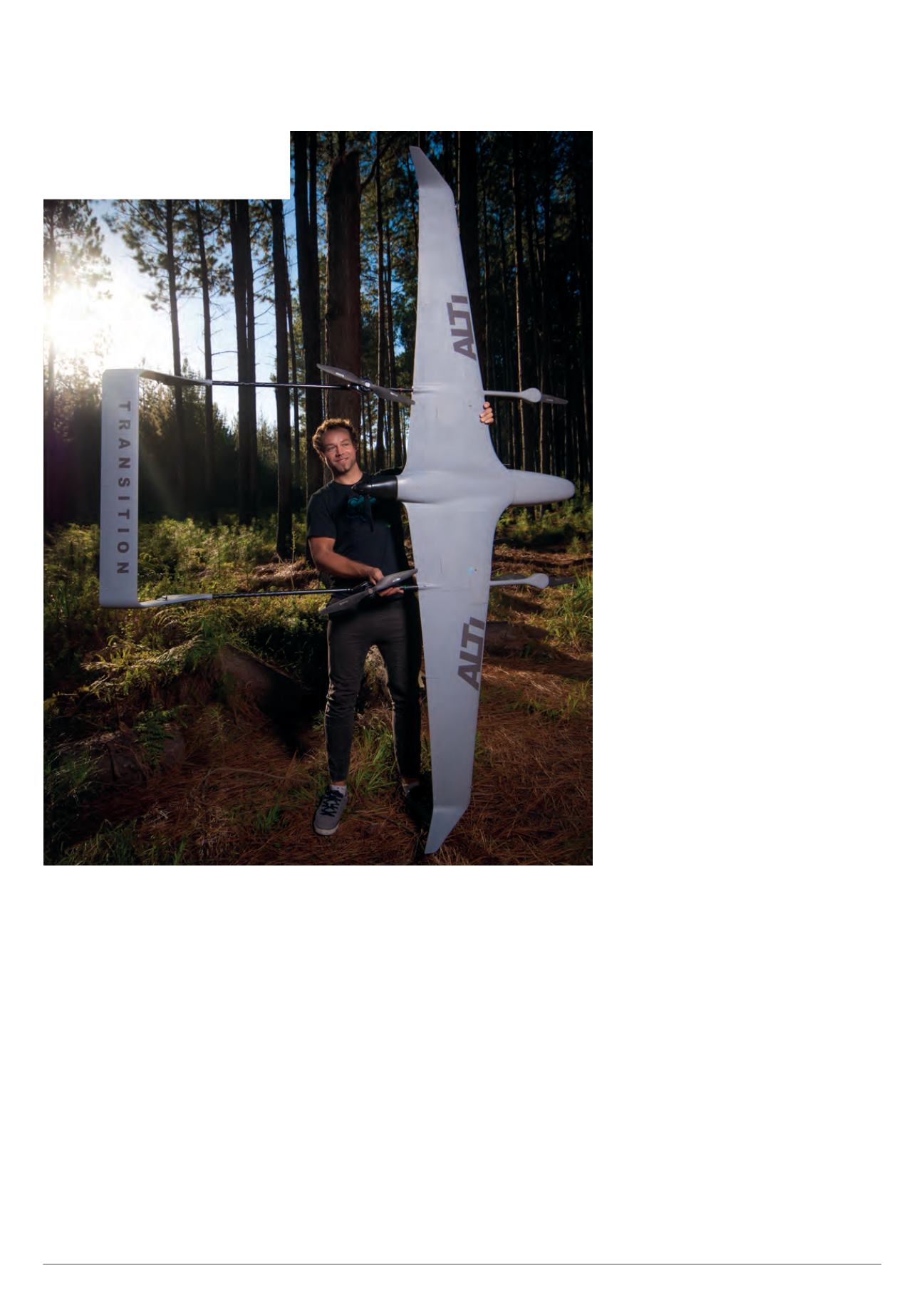

24
Dossier
|
Alti Transition
controllers immediately take over.
“We have designed the airframe with
the motors tilting slightly forward, so
as soon as they take over the airframe
actually flares nose-high, which helps
with slowing it down. Then the PIDs and
the position control in the hover mode
further flare the aircraft and it comes to
a stop fairly quickly. The transition from
fixed-wing flight to hover flight is smooth
and quick,” he says.
Weight and payload fraction are
always at a premium in VTOL aircraft,
and hybrids up the ante even further in
this area. De Villiers therefore needed
an airframe that was structurally and
aerodynamically efficient, as well as one
that was aesthetically pleasing.
Airframe development
Following a market study that revealed
that no such airframe existed, the South
African company turned to Australian
advanced composites house Carbonix,
working with it from mid-2015 to develop
a bespoke design and building the first
prototype towards the end of the year.
Meanwhile, Alti also built and has been
flying a sub-scale platform to test avionics
and software at its base in Western Cape.
The airframe is divided into four main
sections: the main fuselage and wing
roots, the outer wings and the twin-boom
empennage with two vertical stabilisers
joined by a single, high-mounted
horizontal stabiliser and elevator.
The sections are designed for
quick assembly without tools, using a
combination of standard screws and
custom finger fasteners. The design
ensures that parts only fit together
one way, and intuitively. Experiments
with magnets for some non-critical
attachments were also carried out.
Held on by screws, the three
undercarriage legs can also be removed
for packing into a transport case and to
ease replacement if they are damaged.
As all take-offs and landings are carried
out vertically, no wheels are fitted.
The wing has a high aspect ratio and
is made from epoxy resin reinforced in
most places with carbon fibres and in
others with aramid (Kevlar) fibres.
It is a closely coupled high wing with
the bulk of the fuselage underneath
and featuring a combination of dihedral,
washout and winglets. Most of the
airframe consists of a very thin carbon
fibre shell, with Kevlar used for control
surfaces, hinges and other flexible parts,
and foam spars in the wings, more of
which later.
Aeroelastic engineering
The wing design is an example of very
sophisticated aeroelastic engineering,
in which the flying, loaded shape was
considered from the outset.
“The blended root and washout have
the effect of carefully defining span-wise
lift distribution,” de Villiers explains. “The
section and attitude of the inboard wing
takes into account boundary-layer effects
and flow management to the pusher
propeller. Dihedral helps with stability,
and washout prevents dropping a wing
in case of a stall.”
The winglets are in part a response
to the wingspan constraint imposed
on the original design, but come with
further benefits. “They allow some energy
June/July 2016 |
Unmanned Systems Technology
Alti’s owner Duran de Villiers poses with a
Transition prototype, highlighting the high
aspect ratio and winglets that contribute to
the all-composite UAV’s endurance









